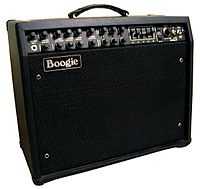
Photo from wikipedia
Stripe noise still affects full-spectrum airborne hyperspectral imager (FAHI) images after laboratory radiometric calibration, which seriously affects the subsequent applications of the imager. Therefore, two state-of-the-art methods, median linear correction… Click to show full abstract
Stripe noise still affects full-spectrum airborne hyperspectral imager (FAHI) images after laboratory radiometric calibration, which seriously affects the subsequent applications of the imager. Therefore, two state-of-the-art methods, median linear correction (MLC) and Fourier transform filtering (FTF), were proposed to restore FAHI images, and the residual stripes were removed in most cases. However, these methods have their own limitations. For instance, the restored image has a slight “shadow” in cases where the high-response digital numbers (DNs) of the detector are aligned with the flight direction. This letter proposes a new method based on improved statistics to restore FAHI images. In this method, the hyperspectral image data from the adjacent flight paths is used to obtain the uniform response DNs for nearly identical low and high irradiances. Subsequently, a statistics-based MLC method is used to eliminate the stripe noise. To quantitatively evaluate the restoration results, we compared results with MLC and FTF methods. The change in mean value and mean relative deviation of the proposed method for the high-response DNs area of the image is 0.25% and 0.97%, respectively, better than that of the other two methods. The experimental results demonstrate that the proposed method is effective for removing stripe noise and preserving accurate image information of push-broom hyperspectral imagery.
Journal Title: IEEE Geoscience and Remote Sensing Letters
Year Published: 2022
Link to full text (if available)
Share on Social Media: Sign Up to like & get
recommendations!